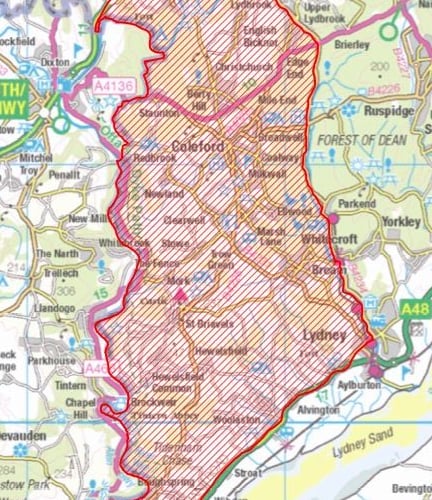LOCALS are being asked to take extra care to clean their boots, bikes and buggies after being out in the woods while the movement of timber in the Forest has been restricted, due to fears over the spread of a harmful tree disease.
Forestry England (FE) has placed a ‘Demarcated Area Notice’ on the West of the Forest of Dean due to positive cases of Phytophthora pluvialis being identified in England and Wales.
The disease, of which no cases have yet been identified in the Forest, causes needles to turn brown and fall off, shoots to dieback, and lesions to the stem, branches and roots of trees including western hemlock, pine and Douglas fir.
The public are being asked to do their bit to stop the spread by brushing off mud and dirt from walking boots, buggies and bike wheels before leaving the Forest and after visiting other woodlands.
FE says the ‘Demarcated Area Notice’ placed on the area may result in timber remaining stacked at roadsides for “longer periods of time”.
The notice restricts the movement of wood, isolated bark, live, felled or fallen trees, fruit, seeds, leaves or foliage that has originated within the demarcated area.

Tom Brockington, Operations Manager for Forestry England in the Forest of Dean explained: “Whilst we do not have a confirmed case of Pluvialis in the Forest of Dean the news that a case has been confirmed nearby and has resulted in the demarcated area notice being issued is of concern.
“There are now a number of confirmed cases in the UK and, Forestry England have been working with Defra colleagues and the UK plant health team in finding out more about this pathogen and what protection measures can be taken. We will continue to work with our colleagues and act upon the advice received.
“We are asking the community to adhere to the legal requirement by not removing brushwood from the woodland that has been issued this notice. We have contacted all our brushwood permit holders to advise them.
“Our timber operations require extra measures to comply with the notice and this may result in timber being stacked at roadside for longer periods of time.”
The disease was first identified in the UK in Cornwall in September last year, and after “extensive surveillance”, further outbreaks were found in Cornwall, Devon, Cumbria, Surrey and at multiple sites in Scotland and Wales.
It was originally reported in Oregon, USA in 2013 on tanoak and Douglas fir and was subsequently identified as the pathogen responsible for ’red needle cast’ of radiata pine in New Zealand.
More information and guidance can be found at www.gov.uk/guidance/phytophthora-pluvialis.




